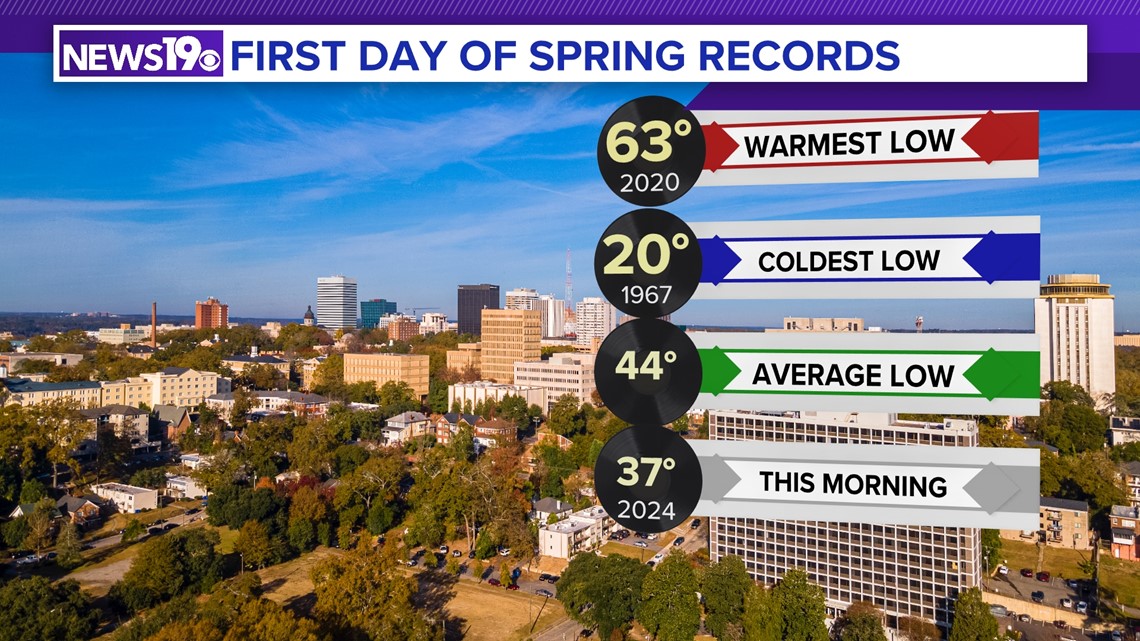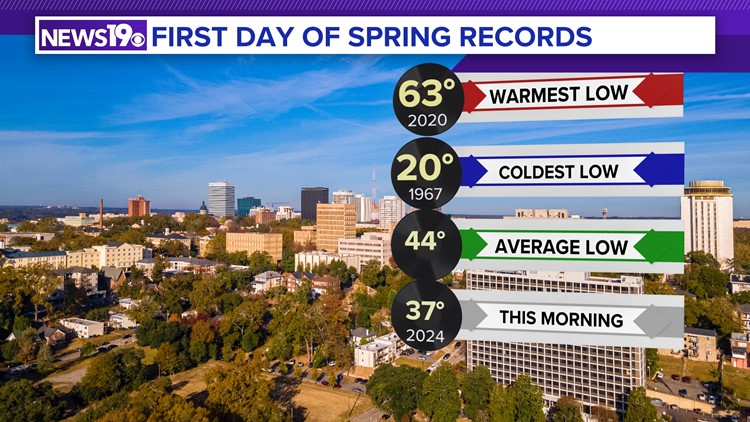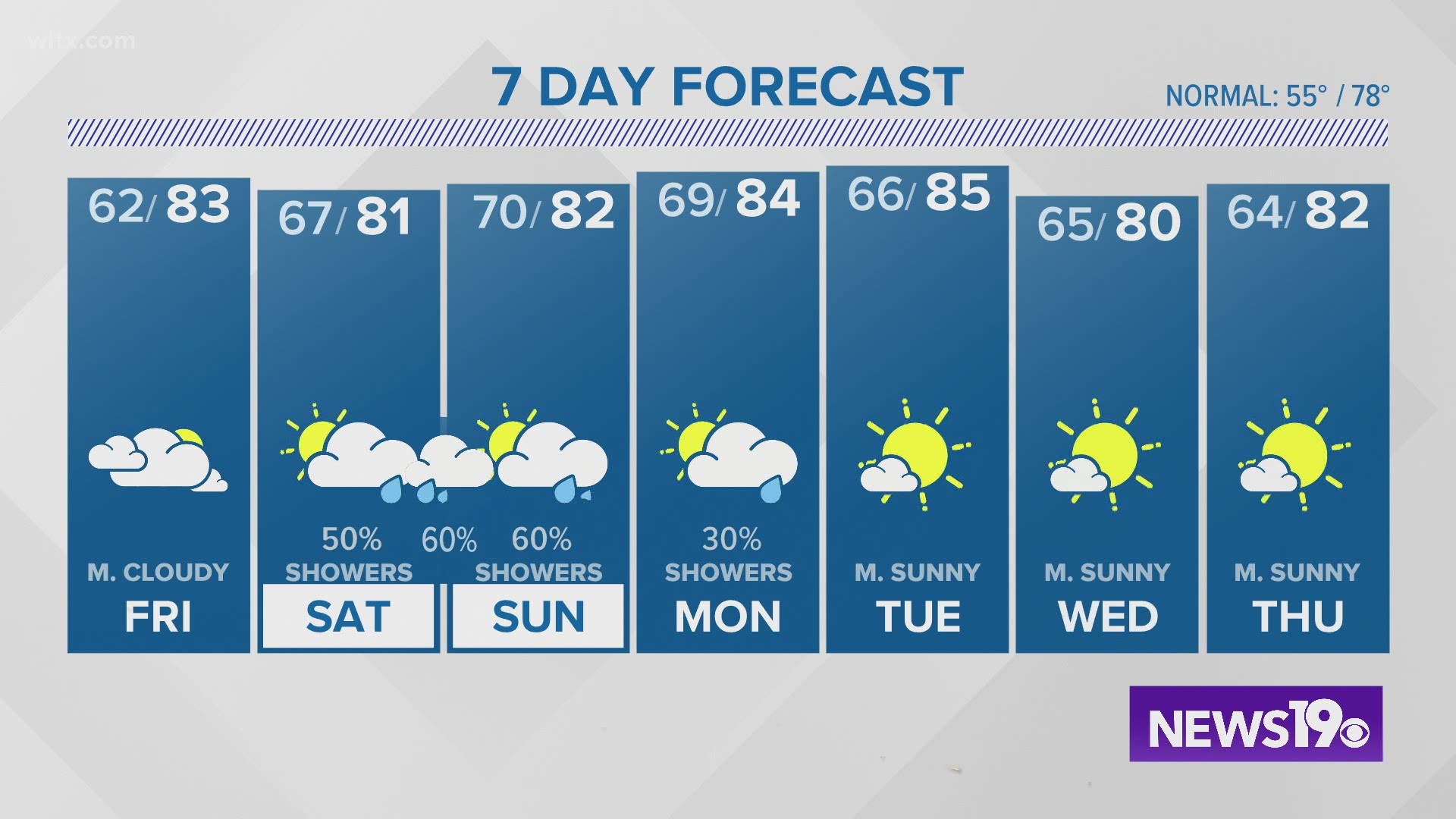COLUMBIA, S.C. — Tuesday morning was, well, COLD.
Columbia Metropolitan Airport recorded a low temperature of 37 degrees.
The state only hit the 30's in the morning one other time this month and that was on March 11.
The usual morning temperatures have been in the 40's and 50's and those days were unseasonably warmer than the average low temperature of 44 degrees.
Only one morning started in the 30's, until Tuesday.
Has the first day of Spring historically been cold like this?
Well, we know that climatologically the average low is 44, but when we look back at the last nine years of Spring low temperatures, it's a wide range from as warm as 64 degrees in 2016, to 37 degrees in 2015.
Two other years, 2017 and 2019, saw low temperatures in the 30's.


If 44 degrees is the average morning low temperature for Spring Day one, many of you will recall in 2020 when we broke the record for the warmest morning temperature to start the season at 63 degrees.
That is what the morning low would be in late May.
RELATED: Local Forecast
If we go in the opposite direction the coldest Spring morning was in 1967, when the low temperature dropped to 20 degrees.


Are freezing temperatures for the first day of Spring a normal thing?
We know that the last decade of Spring mornings, temperatures have been in the 30's, 40's, 50's and 60's.
So much for consistency.
But the climatological answer is yes.
The seasonal transition from Winter to Spring, delivering the last freeze from 'Ol' Man Winter' is the middle of March.
Remember, that's just from a climatological and historical dating ,it has and can happen, later than mid- March but it's rare.


When the National Weather Services office issues a 'freeze warning', there is an 80% chance, that the lowest temperature will be 32 degrees or lower.
The warning would be issued 24 hours prior, with the temperature dropping to at least 32 degrees.
If it's the dead of winter, December or January, and the morning temperature is at or below freezing, how come there wasn't a 'freeze warning' issued?
The National Weather Services work in conjunction with the agricultural industry to tie this warning to the growing season.
So in this part of the country don't see the warnings until starting March 1st.





